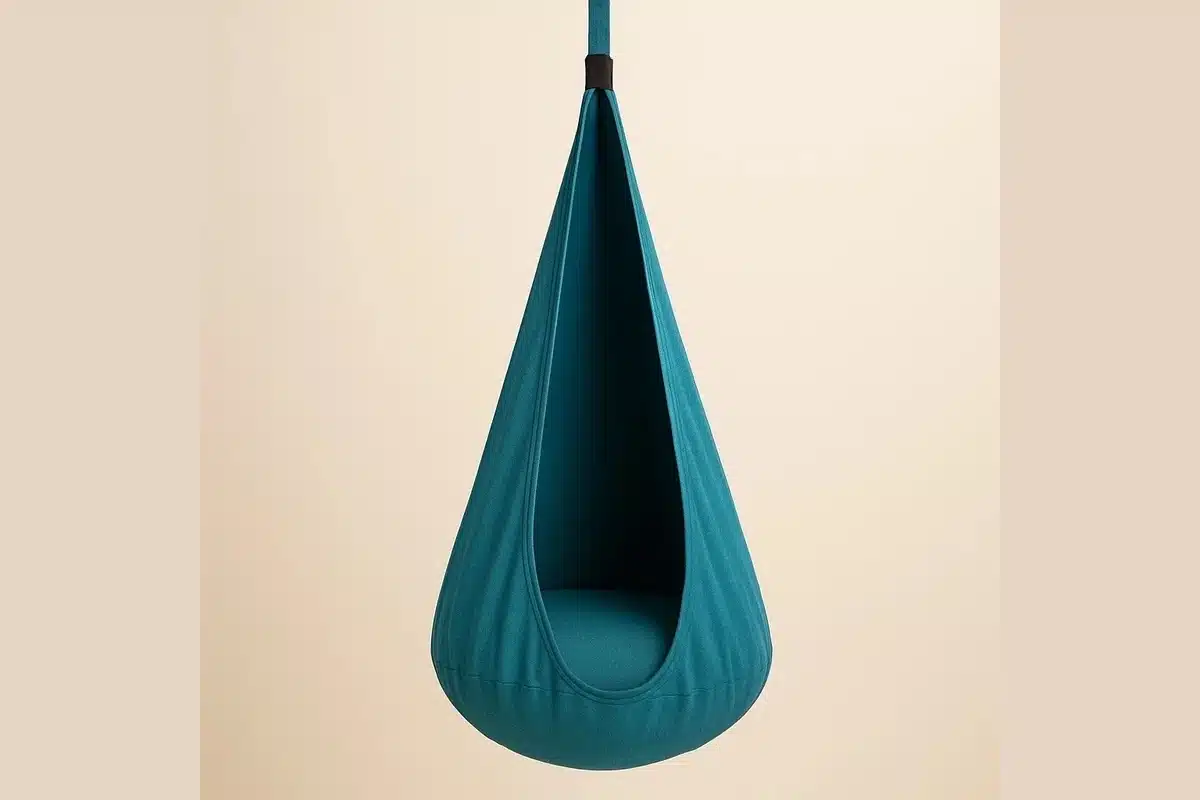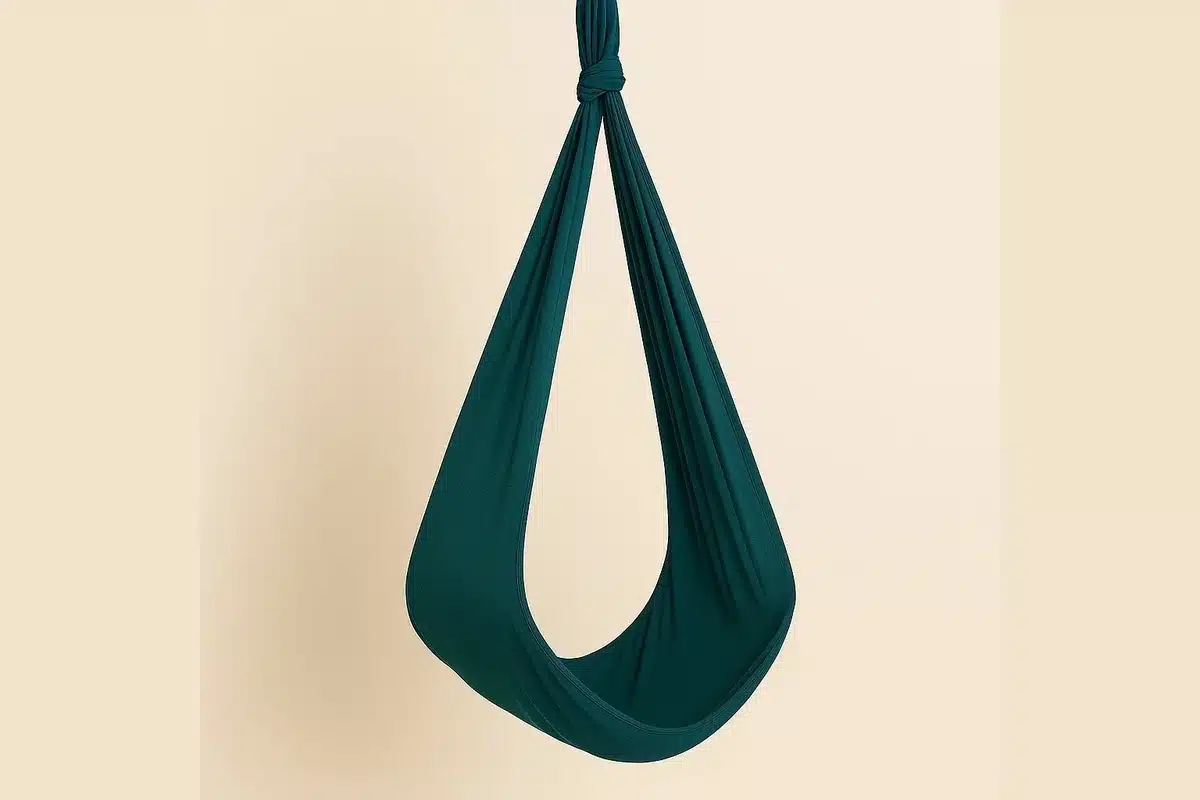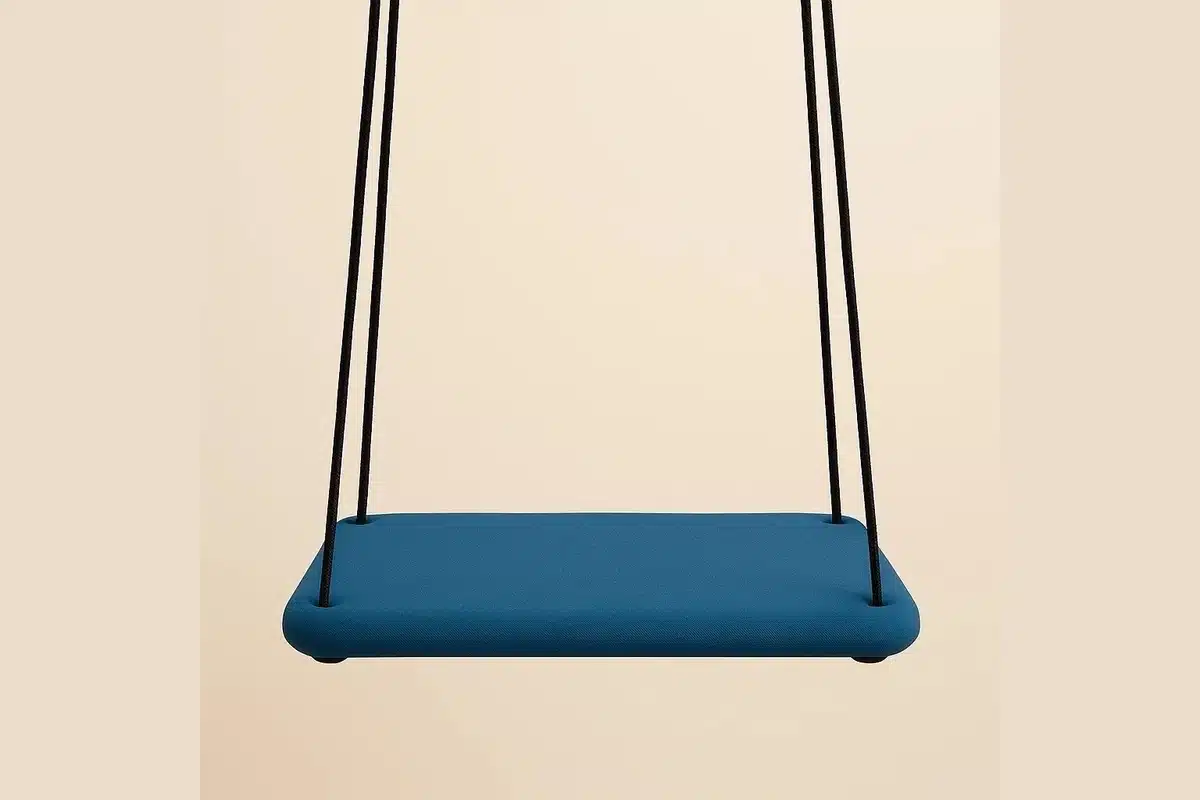Sensory Swings: Benefits, Types, and Safe Setup (OT-Informed Guide)
Sensory swings can help with regulation, attention, and motor planning by delivering calming vestibular and proprioceptive input. Below: which swing to choose, how to mount it safely, and quick routines that fit real life.
Quick take
- Best for calming: Pod (cocoon) or compression swings
- Best for balance/core: Platform (or saucer) swings
- No drilling: See No-Mount Swings and Sensory Chairs
- Starter routine: 2–5 minutes of rhythmic, predictable movement; adjust based on regulation
Note: Always supervise and follow product weight limits. Educational content, not medical advice.
Benefits & OT-informed context
Sensory swings are popular in occupational therapy because they provide controlled vestibular (movement/balance) and proprioceptive (body awareness) input. For many users, short sessions of gentle, predictable swinging can support:
Regulation
- Calming and emotional regulation
- Attention/readiness for tasks
Motor skills
- Balance, posture, core activation
- Motor planning & coordination
Body awareness
- Bilateral integration and timing
- Confidence in space & safety
Consistency beats intensity: many families find that a short, predictable routine before transitions or focused work helps the nervous system organize.
Types of sensory swings (and when to choose each)

Pod / Cocoon
Best for: Deep-pressure comfort, “hugged” feeling, reducing overwhelm.
Good to know: Stretchy fabric can provide gentle compression and visual shielding; often the most calming option.

Compression
Best for: Calming + movement together; sensory seekers.
Good to know: Pairs proprioceptive input with rhythmic swinging; great before homework or bedtime.

Platform / Saucer
Best for: Balance, core, and motor planning.
Good to know: Supports sitting, prone, or kneeling; versatile for play-based therapy.
| Type | Best for | Good to know |
|---|---|---|
| Pod / Cocoon | Deep-pressure comfort; reducing overwhelm | Often the most calming; adds visual shielding |
| Compression | Calming + movement; seekers | Even pressure + rhythmic motion; good pre-homework |
| Platform / Saucer | Balance & core; motor planning | Multi-position play; needs more clearance |
No-Mount Options for Rentals & Small Spaces
If you can’t drill into joists or need a portable setup, start here. We cover free-standing frames, doorway bars, and seated movement alternatives.
Free-Standing Frames
Self-supporting structures that hold most single-point swings. Great when you have floor space and want full motion without drilling.
Doorway Bars
Brace into standard interior door frames for gentle swinging. Fast to install and pack away.
Sensory Chairs (No Hang)
Rocking/spinning movement input without any hanging hardware—ideal for tight spaces.
How to choose the right swing
- Goal: Calming vs. motor work determines type (see above).
- Space: Ceiling height, clear radius, and floor protection.
- Mounting: Can you anchor into a joist? If not, pick a frame/doorway option.
- Weight & durability: Check working load for the swing, hardware, and frame.
- Age & supervision: Choose age-appropriate designs; always supervise.
- Fabric feel: Stretchiness and texture matter for sensory preferences.
Safety & mounting
For fixed installs, anchor into a structural ceiling joist or beam with rated hardware. If drilling isn’t possible, choose a free-standing frame or doorway/portable stand designed for swings.
- Use manufacturer-rated hardware and observe all weight limits.
- Inspect carabiners, swivels, daisy chains, and fabric weekly.
- Keep a safe landing zone under and around the swing.
- Supervise at all times and avoid fast spinning unless guided by a therapist.
Simple routines that work
- Start small: 2–5 minutes of slow, predictable movement.
- Watch regulation: Look for calmer breathing, relaxed posture, and readiness for the next activity.
- Adjust: Many users thrive with up to ~15 minutes; others need less.
- Pair tools: After swinging, transition to a focus task or cool-down (e.g., a weighted blanket or visual schedule).
Frequently Asked Questions
What age can start using a sensory swing?
With close adult supervision and age‑appropriate equipment, many families start in the toddler years. Always follow the manufacturer’s age and weight guidance and keep sessions short at first.
How long should a session be?
Start with 2–5 minutes of slow, predictable movement. If regulation improves and the user wants more, build gradually toward 10–15 minutes. Stop if you see signs of dysregulation (flushed face, dizziness, nausea, agitation).
How often can we use it in a day?
Many families use brief sessions before transitions (after school, before homework/bed) and as part of a sensory plan. Frequency depends on response; quality of movement is more important than duration.
Which type is best for autism vs. ADHD?
There’s no one‑size‑fits‑all. In general, pod and compression styles support calming and body awareness; platform styles emphasize balance, core, and motor planning.
Is spinning safe?
Short, gentle spinning can be tolerated by some users, but fast or prolonged spinning can cause dizziness or dysregulation. If you’re unsure, avoid spinning or consult with an OT.
My child gets motion sick—now what?
Keep motion slow and linear (front–back), limit duration, and follow with deep pressure (e.g., firm hugs, weighted lap pad) or grounding activities on the floor.
What ceiling height and clearance do I need?
Most setups work well with 7–9 ft ceilings. Leave clearance for the swing’s full arc plus a buffer of at least 2–3 ft on all sides. Use mats where appropriate.
Can I mount into drywall?
No. For permanent installs, mount into a structural joist or beam using rated hardware. If drilling isn’t possible, use a free‑standing frame or doorway bar.
What’s the difference between working load and breaking strength?
Working load is the safe, everyday limit; breaking strength is the failure threshold in testing. Choose hardware where the working load comfortably exceeds the user + swing + dynamic forces.
Do I need a swivel?
Only if your setup involves rotation. A rated swivel can reduce rope twist and distribute forces, but it does not substitute for proper mounting or supervision.
Are there rental/small‑space options?
Yes—see No‑Mount Swings for free‑standing frames and doorway bars. Also consider sensory chairs for seated rocking/spinning with no hanging hardware.
Indoor vs. outdoor use?
Many swings and frames can be used outdoors if the materials and hardware are weather‑appropriate. Follow the manufacturer’s instructions and store fabric out of sun/rain to extend life.
Cleaning and care?
Most fabric swings are machine‑washable on gentle; air‑dry to protect elasticity. Wipe hardware regularly and check for wear, fraying, or sharp edges.
Will insurance or HSA/FSA cover it?
Some families use HSA/FSA funds with a clinician’s note; insurance coverage varies. Ask your provider and therapist for documentation of therapeutic use.
What if my child avoids swings?
Start with floor‑based movement (rocking, scooter board) and heavy‑work input, then try very short, predictable swinging with preferred music or visuals.
How do I set rules?
Keep it simple: “One rider, feet first, slow and steady, ask to start/stop.” Post visuals and model the routine.
Can swings be used at school?
Yes, under an IEP/504 plan and with staff training. Consider portable frames or seated alternatives for classrooms.
When should I consult an OT?
If you’re unsure how much movement is helpful, your child seeks intense spinning, or you see dysregulation after swinging, an OT can help build a customized plan.
Where to go next
Comparison Guide
Pod vs. Compression vs. Platform—pros, cons, and who each fits.
Pod Swings
Best options, OT notes, and setup tips (contains affiliate links).
Compression Swings
Top picks and routines for regulation (contains affiliate links).
Platform Swings
Versatile choices for balance and play (contains affiliate links).
No-Mount Swings
Frames & doorway bars for rentals and small spaces.
No-Hang Alternatives
Sensory chairs for rocking/spinning movement—zero drilling.
